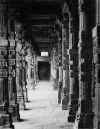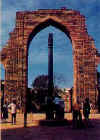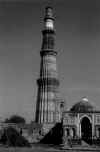|
|
||||
|
Ambassador of Nepal Ambassador of Pakistan Ambassador of Sri Lanka
History Made Easy South Asian Memories
|
|
|
||
|
the-south-asian.com December 2000 |
||||
|
Page 2 of 5 Delhi - the resilient city
Delhi – in the last millennium – Part I AD 1000 – AD 1100 1020 - Raja Anangpal Tomar built the town of
Anangpur and Lal Kot He also installed an iron Pillar of Vishnu in the middle of
the city of Lal Kot. Around that time - A Turk, Mahmud Ghazni, annexed
north India. In 1022 he made Lahore his provincial capital. He invaded
Hindustan 17 times. Destroyed Chakraswami temple at Thanesar, and Somnath in
Gujarat, among others, to replenish his treasury. 1191 – Prithviraj Chauhan, the last Hindu ruler
of Delhi, defeated and pardoned Mohammad Ghor, the Turkish warlord, in the
first battle between them. He also renamed Lal Kot – Qila Rai Pithora. 1192 - Mohammad Ghor attacked and defeated and
killed Prithviraj. The Hindu fortress city of Lal Kot/Rai Pithora fell.
Mohammad Ghor destroyed the Hindu temples that lay along his way. Mohammad Ghor , before returning to Ghor, made his slave
Qutab ud din Aibak a General and left him in charge of Delhi. 1199
|
||||
| Copyright © 2000 [the-south-asian.com]. Intellectual Property. All rights reserved. | ||||
| Home |



